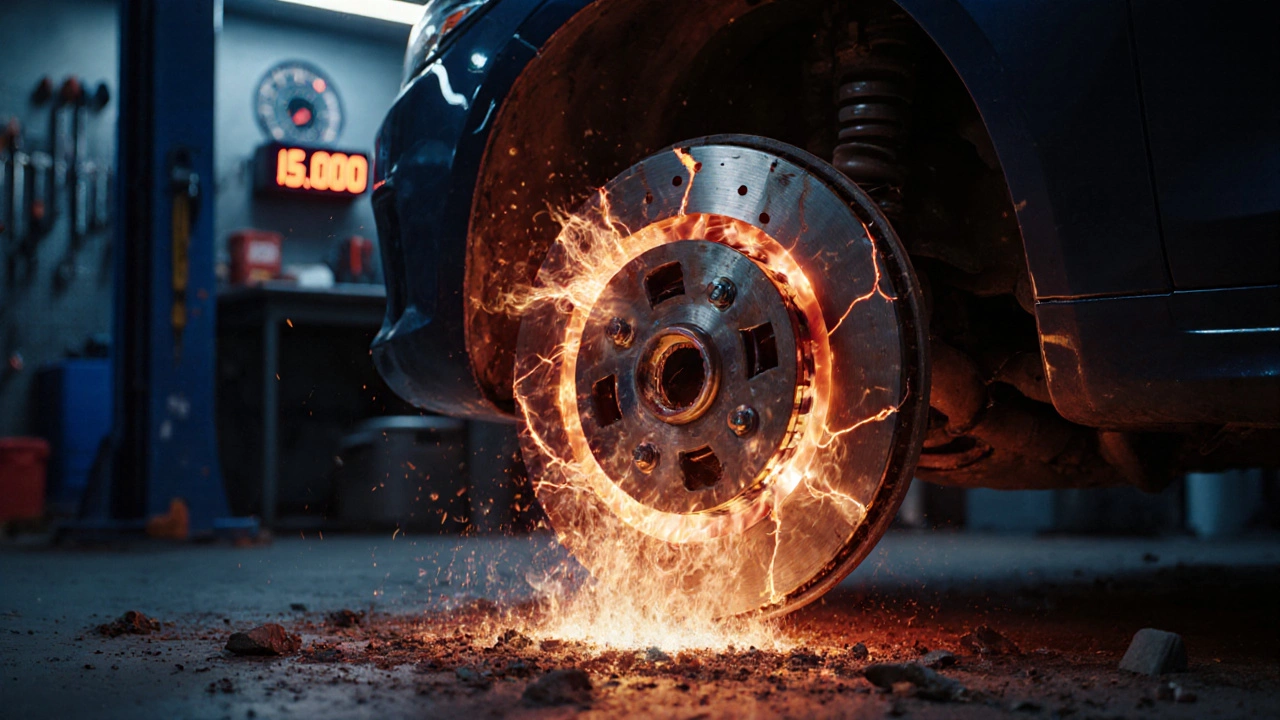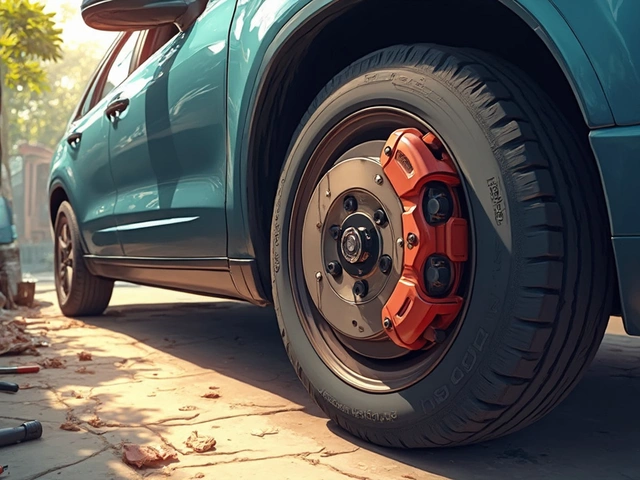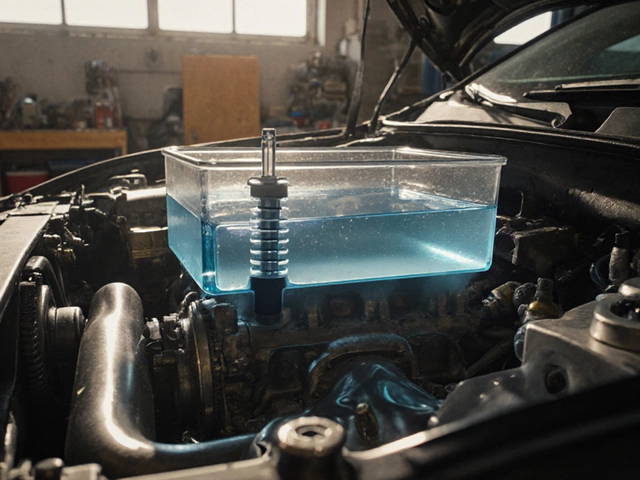Clutch Lifespan Calculator
How long will your clutch last?
Input your driving habits and vehicle details to estimate your clutch's remaining lifespan based on real-world conditions.
Ever slammed the gas pedal in first gear, felt the clutch slip, and wondered, how long until this thing dies? You’re not alone. Clutch burnout isn’t some mysterious event that happens out of nowhere-it’s a slow burn, usually made worse by habits you didn’t even realize were damaging your car. And yes, it can happen faster than you think.
How fast can a clutch actually burn out?
Under normal driving, a clutch lasts between 60,000 and 100,000 miles. That’s the average. But if you’re aggressive with the pedal, ride the clutch, or drive in heavy stop-and-go traffic, it can go in as little as 20,000 miles. I’ve seen clutches fail in under 15,000 miles in Adelaide’s inner-city traffic-especially in older manual cars with heavy flywheels.
It’s not about time. It’s about heat. Every time the clutch slips-even slightly-it generates friction. That friction turns into heat. Too much heat, and the friction material on the clutch disc starts to glaze, crack, or even melt. Once that happens, the clutch can’t grip properly. It slips. Then it slips more. Then it’s done.
What actually kills a clutch?
Most people think it’s just age. It’s not. It’s how you drive.
- Riding the clutch: Keeping your foot lightly on the pedal while driving. Even a tiny bit of pressure causes partial disengagement. That’s constant slipping. I’ve had customers come in with 40,000-mile clutches that looked like they’d been through a furnace-all because they rested their foot on the pedal while waiting at traffic lights.
- Power launches: Flooring it from a stop in first gear, especially in a tuned car or a heavy vehicle. The clutch absorbs all that torque instantly. One hard launch won’t kill it. Ten a week? That’s a death sentence.
- Hill starts with the clutch: Holding the car on a hill by balancing between the clutch and gas, instead of using the handbrake. That’s clutch as a brake. It’s not designed for that. The friction material wears faster than the brake pads.
- Driving in heavy traffic: Stop-start driving means constant clutch engagement and disengagement. In cities like Adelaide’s CBD or Melbourne’s gridlock, manual drivers often burn clutches 30% faster than highway drivers.
And don’t be fooled by the myth that "it’s just a wear item." It’s not like brake pads. Once it starts slipping, it doesn’t just get thinner-it gets damaged. Glazed surfaces don’t recover. Cracked discs don’t heal. You’re not saving money by waiting. You’re risking damage to the flywheel, pressure plate, or even the transmission input shaft.
Signs your clutch is burning out
You don’t need a mechanic to tell you it’s dying. Your car will tell you-loudly.
- Slipping under load: You’re in 3rd gear, flooring it on the highway, and the engine revs up but the car doesn’t accelerate. That’s clutch slip. It’s not the engine. It’s not the transmission. It’s the clutch failing to transfer power.
- Burning smell: A sharp, acrid smell like overheated plastic or burnt toast. That’s the friction material cooking. If you smell it, pull over. Keep driving, and you’ll fry the clutch completely.
- Soft or spongy pedal: The pedal feels like it’s going further to the floor than before. That means the clutch disc is worn thin, or the hydraulic system is leaking. Either way, it’s not holding pressure.
- Difficulty shifting: Gears grind or refuse to engage, especially when the engine is warm. That’s often a sign the clutch isn’t fully disengaging.
- Clutch pedal feels higher: If you have to press the pedal much closer to the floor to get the same engagement point, the disc is worn down. The release mechanism has to travel further to reach the pressure plate.
One real-world example: A customer brought in a 2018 Mazda3 with 32,000 km on the clock. He drove it like a race car-launching from every light, riding the clutch in traffic. The clutch disc was glazed and cracked. The flywheel had heat spots. He thought he’d get another 20,000 km out of it. He got 8,000.
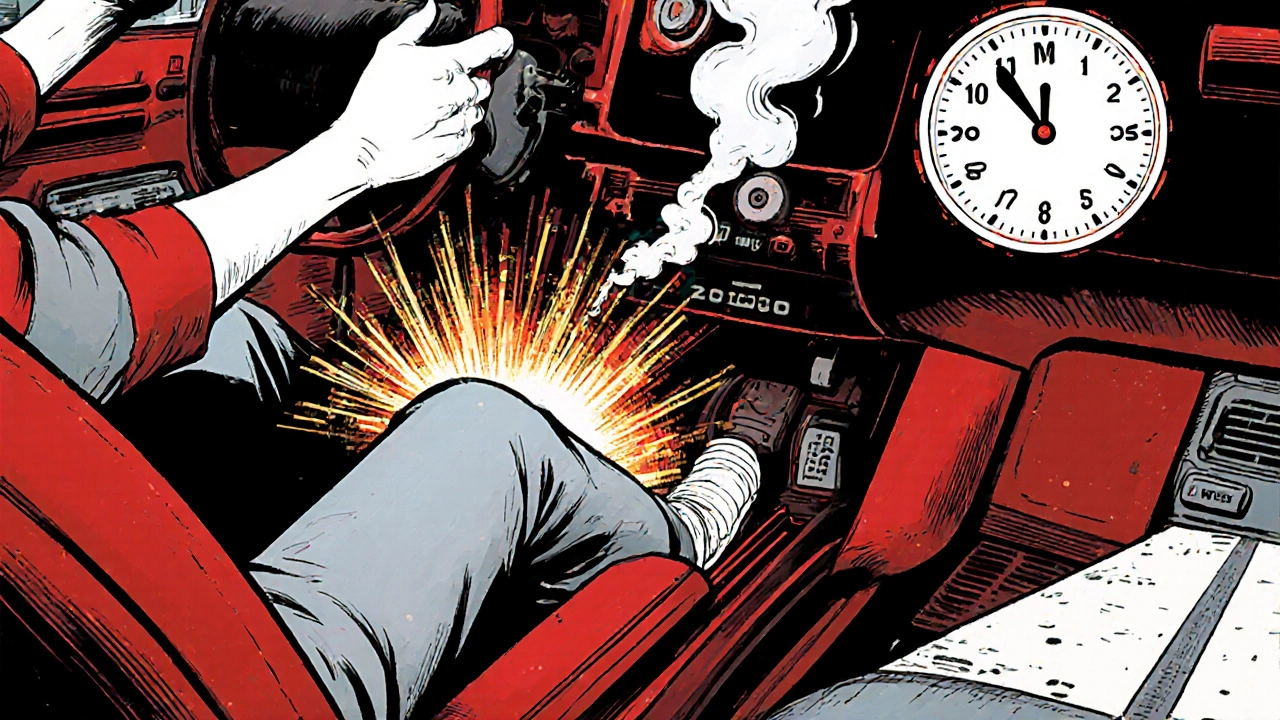
Can you extend clutch life?
Yes. And it’s simple.
- Don’t ride the pedal: Keep your foot off the clutch unless you’re shifting. Rest your heel on the floor, not the pedal.
- Use the handbrake on hills: It’s not cheating. It’s smart. It takes the load off the clutch.
- Shift smoothly: No need to slam gears. Just match revs slightly when downshifting. It reduces shock and wear.
- Avoid power launches: Especially if your car has more than 200 horsepower. The clutch isn’t built for drag racing.
- Check fluid levels: If your clutch is hydraulic, low fluid means poor engagement. Check it every oil change.
And if you drive in heavy traffic? Consider a high-performance clutch kit designed for stop-start use. Brands like ACT, Exedy, and LUK make kits with higher heat tolerance. They cost more upfront-but they’ll last longer if you’re hard on the clutch.
What happens if you ignore it?
Ignoring a slipping clutch doesn’t just mean replacing the clutch. It means replacing more.
When the clutch disc burns out, it often throws debris into the bell housing. That debris can get caught between the flywheel and pressure plate. The flywheel surface gets scored. The pressure plate springs weaken. The input shaft bearing can seize from lack of lubrication if the clutch doesn’t disengage properly.
One bad clutch failure can turn a $800 repair into a $2,500 job. That’s not speculation. That’s what I’ve seen in Adelaide workshops over the last five years.
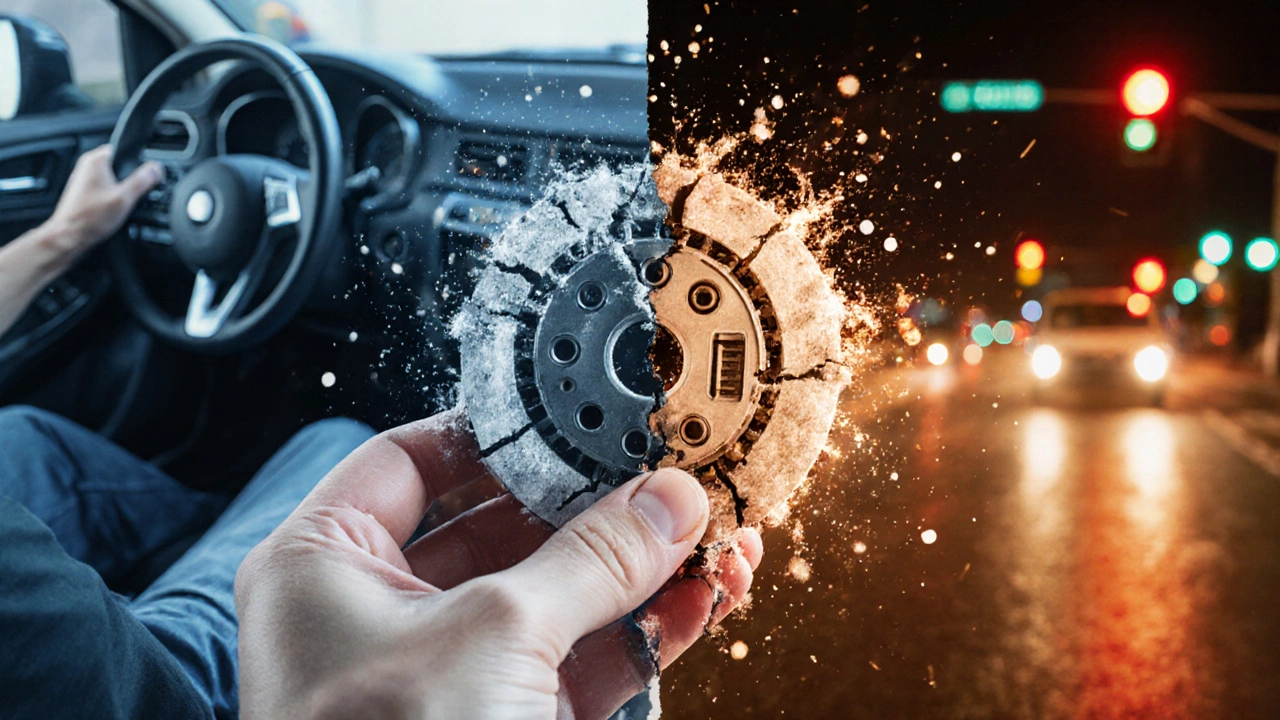
When should you replace it?
Replace the clutch at the first sign of slipping or burning smell. Don’t wait for it to fail completely. If you’re doing a clutch job anyway, replace the pressure plate and throw-out bearing too. They’re wear items. Replacing them together saves labor costs and prevents a repeat job in six months.
And if your car has over 80,000 miles and you’ve never replaced the clutch? Get it checked. Even if it’s working fine, the friction material may be thinning. A mechanic can measure the disc thickness. If it’s below 70% of original, replace it.
Clutch kits: What’s the difference?
Not all clutch kits are created equal.
| Kit Type | Material | Best For | Expected Lifespan |
|---|---|---|---|
| Stock OEM | Organic fibers | Everyday driving | 80,000-120,000 miles |
| Performance | Ceramic, Kevlar, or sintered iron | Aggressive drivers, towing, track use | 60,000-100,000 miles |
| Heavy-Duty | Multi-plate, high-torque springs | Trucks, modified engines, off-road | 50,000-80,000 miles |
| Budget Aftermarket | Low-grade organic | Low-mileage, light use | 30,000-50,000 miles |
Don’t buy the cheapest clutch kit just to save money. You’ll pay twice. A good performance clutch might cost $400-$600 installed. A budget one might be $250-but it’ll slip within 20,000 miles if you drive hard. Then you’re back in the shop.
Final thought: It’s not a matter of if-it’s when
Every clutch will wear out. The question is: how quickly? And whether you control the timeline-or your driving habits do.
If you drive gently, avoid abuse, and pay attention to the signs, your clutch could last 100,000 miles or more. But if you treat it like a disposable part, it’ll fail before you hit 30,000.
Clutches aren’t magic. They’re physics. Friction creates heat. Heat destroys material. And if you keep feeding it abuse, it’ll burn out faster than your phone battery on a hot day.
Can a clutch burn out in just a few weeks?
Yes, if you’re driving aggressively. Constant slipping, power launches, and riding the clutch can destroy a standard clutch in under 10,000 miles. In extreme cases-like daily stop-start driving in heavy traffic combined with hard launches-a clutch can fail in as little as three to four weeks. It’s rare, but it happens.
Is clutch burnout covered under warranty?
Almost never. Most manufacturer warranties exclude wear items like clutches, especially if the failure is due to driving habits. If you modified your car, used it for towing, or raced it, the warranty is void. Even if you didn’t, many dealers will argue that "improper use" caused the failure. Keep your driving habits documented if you want a chance at a claim.
Can you drive with a slipping clutch?
You can, but you shouldn’t. Driving with a slipping clutch puts extra strain on the transmission and engine. It also increases fuel consumption and can overheat the flywheel. If you must drive, avoid hills, heavy loads, and high revs. Get it repaired as soon as possible.
Does a heavier car wear out the clutch faster?
Yes. Heavier vehicles require more torque to move, which means the clutch has to grip harder. That increases heat and friction. A 2,000 kg SUV will wear a clutch faster than a 1,200 kg hatchback, even with identical driving habits. That’s why trucks and SUVs often come with heavy-duty clutch kits from the factory.
How much does a clutch replacement cost?
In Australia, expect to pay between $1,200 and $2,500 for a full clutch replacement, depending on the car. Labor takes 4-8 hours because the transmission has to be removed. Parts alone range from $400 for a basic kit to $800 for a performance one. Always replace the pressure plate and throw-out bearing at the same time.
Do automatic cars have clutches?
They don’t have a foot-operated clutch, but automatic transmissions use torque converters and clutch packs internally to shift gears. These can wear out too, but they’re not the same as a manual clutch. If you’re asking about manual transmission clutches, then no-automatics don’t have them.
